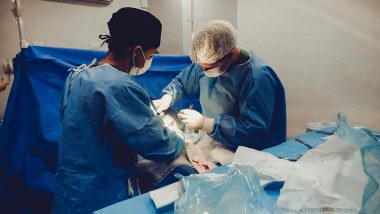Boston, June 12: Scientists have developed a tiny device that can deliver drugs to damaged tissues and prevent heart failure. After a patient has a heart attack, a cascade of events leading to heart failure begins. Damage to the area in the heart where a blood vessel was blocked leads to scar tissue. In response to scarring, the heart will remodel to compensate. This process often ends in ventricular or valve failure.
Researchers including those from Harvard University in the US and Royal College of Surgeons in Ireland hope to halt the progression from heart attack to heart failure with a small device called 'Therepi'. The device contains a reservoir that attaches directly to the damaged heart tissue. A refill line connects the reservoir to a port on or under the patient's skin where therapies can be injected either by the patient or a healthcare professional.
"After a heart attack we could use this device to deliver therapy to prevent a patient from getting heart failure," said Ellen Roche, assistant professor at Massachusetts Institute of Technology (MIT) in the US. "If the patient already has some degree of heart failure, we can use the device to attenuate the progression," said Roche.
Two of the most common systems currently used for delivering therapies to prevent heart failure are inefficient and invasive. In one method, drugs are delivered systemically rather than being administered directly to the site of the damage. The volume of drugs used has to be limited to avoid toxic side effects and often only a small amount reaches the damaged heart tissue.
The alternative method involves an invasive procedure to directly inject therapies into the heart muscle. Since multiple doses are needed, this requires multiple invasive surgeries.
Therepi addresses the problems with current drug delivery methods by administering localised, non-invasive therapies as many times as needed. The device's reservoir can be implanted on the heart in just one surgical procedure. The reservoir itself holds amazing potential for drug delivery. Constructed out of a gelatin-based polymer, the reservoir has a half-spherical shape with a flat bottom attached to the diseased tissue.
The flat bottom consists of a semi-permeable membrane that can be adjusted to allow more drugs or larger materials to pass directly into the heart tissue. "The material we used to construct the reservoir was crucial. We needed it to act like a sponge so it could retain the therapy exactly where you need it," said William Whyte, PhD candidate at Trinity College Dublin in Ireland. "That is difficult to accomplish since the heart is constantly squeezing and moving," Whyte said.
The reservoir provides a unique opportunity for administering stem cell therapies. It acts as a cell factory. Rather than pass through the membrane into the heart, the cells stay within the reservoir where they produce paracrine factors that promote healing in the damaged heart tissue. In a rat model, the device was shown to be effective in improving cardiac function after a heart attack. The researchers administered multiple doses of cells to a damaged heart throughout a four-week period. They then analysed the hemodynamic changes in the tissue using a pressure-volume catheter and used echocardiography to compare functional changes over time.













 Quickly
Quickly




















